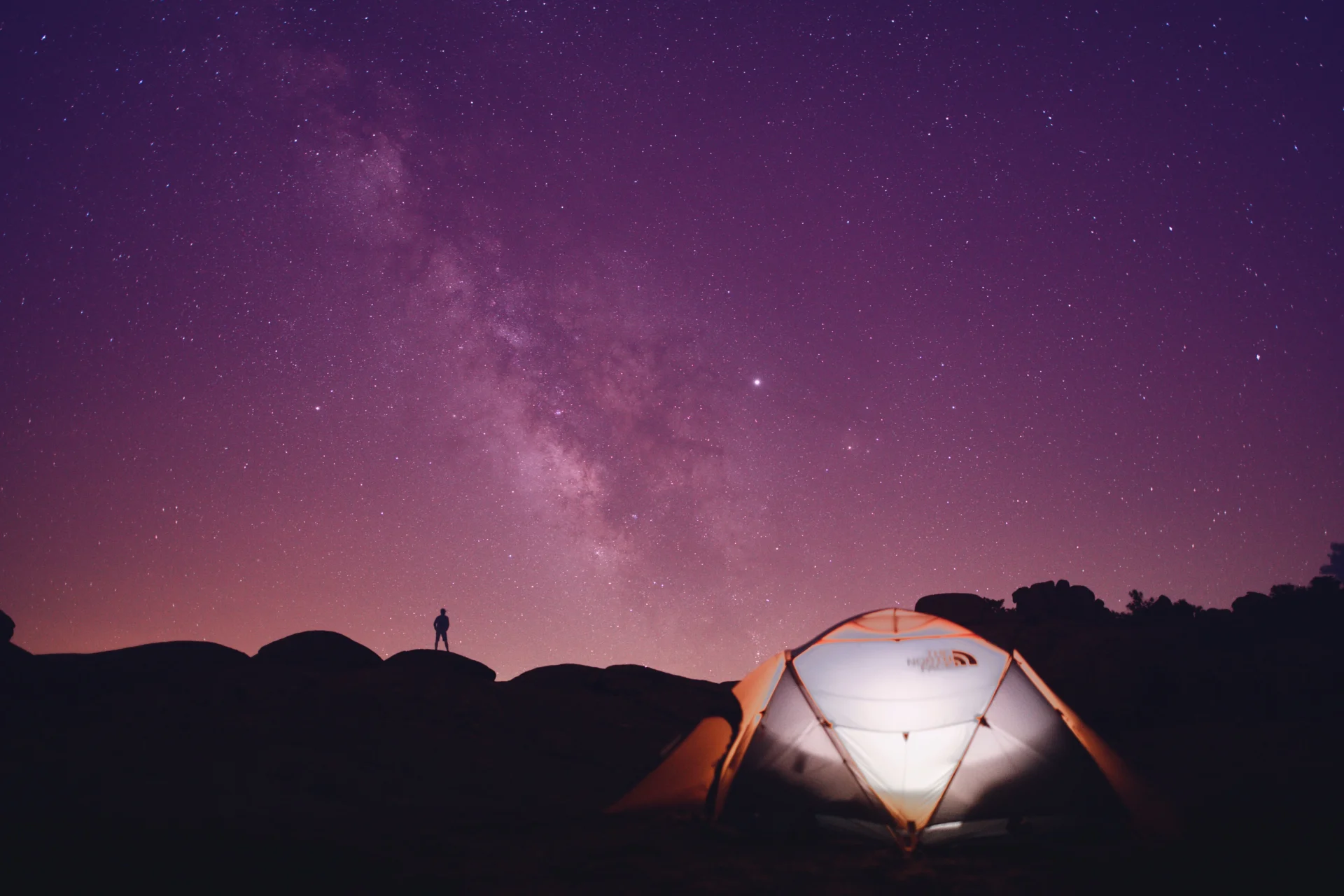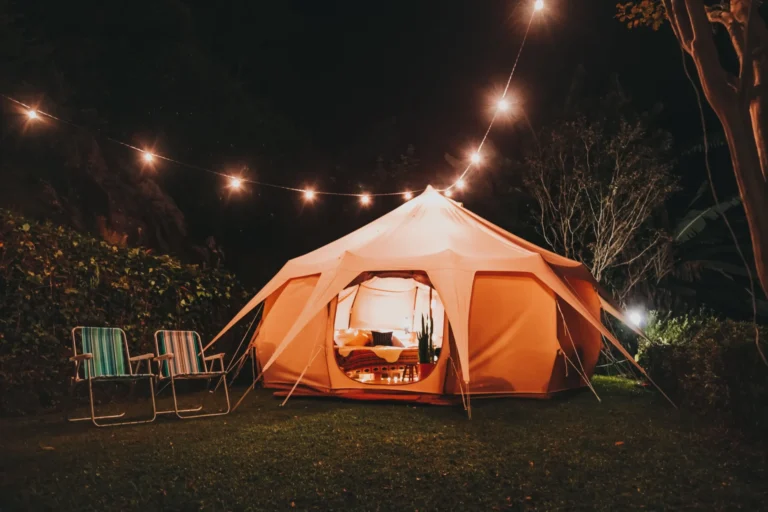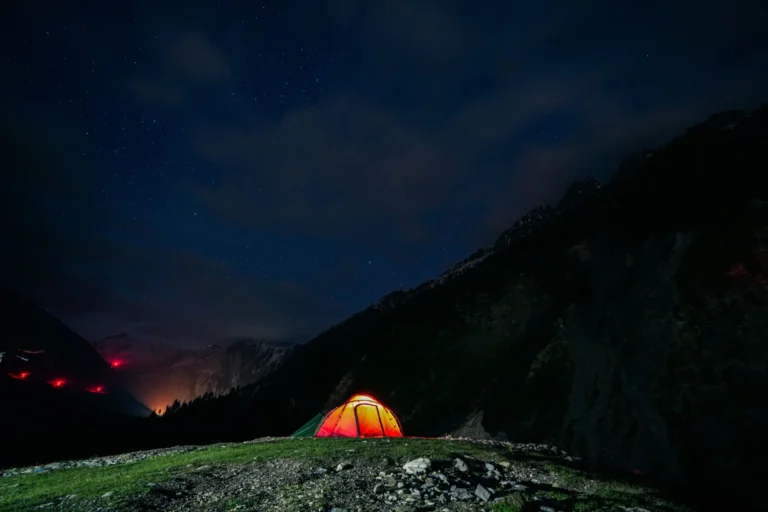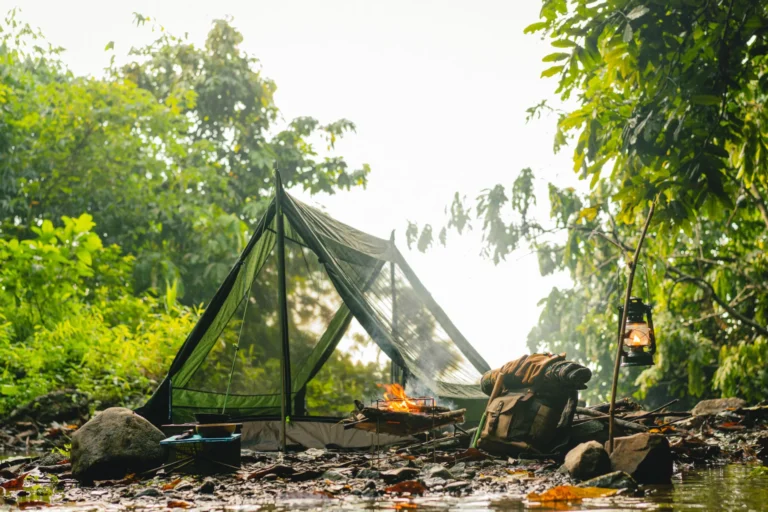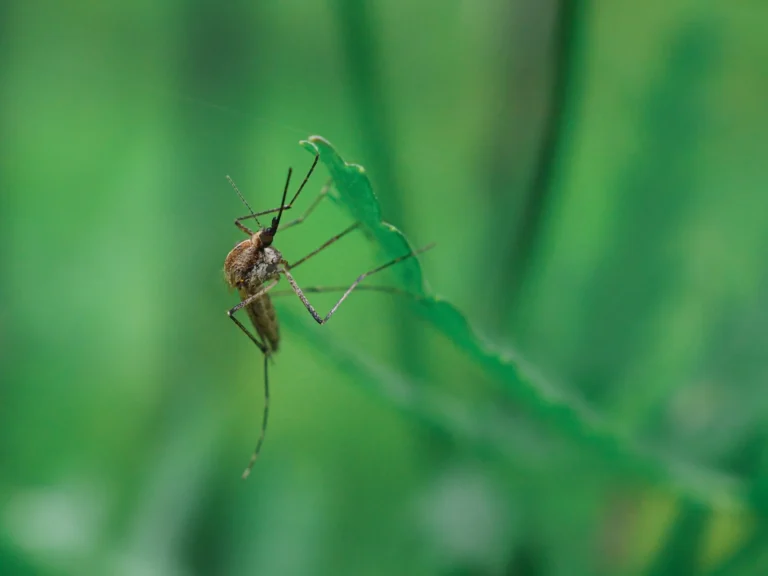After a hard day, nothing beats returning to a tent and sleeping soundly on a comfy sleeping setup beneath the stars. This article will show how to make sleeping in a tent more comfortable. We will help you pick your ideal bedding and set up a peaceful sleeping space.
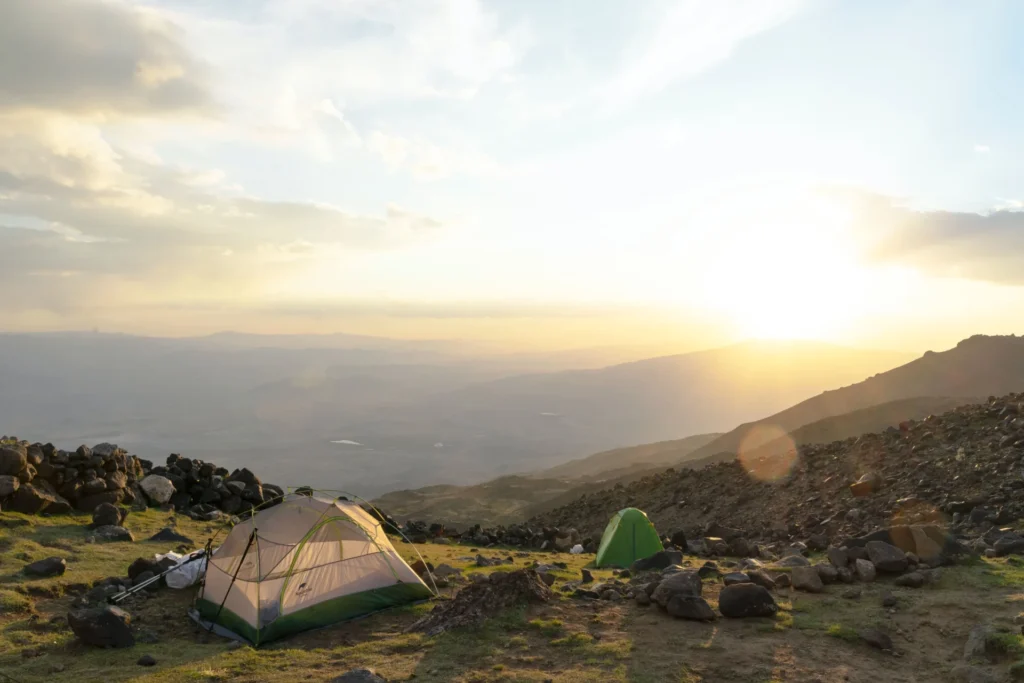
Tent sleeping in the wilderness is less pleasant than sleeping in your bed unless you’re glamping or car camping. Yet, with forethought, one may get quite close to the mark. It only takes planning, the right outdoor sleeping gear, and a little compromise. Let’s explore the top tips for a good night’s sleep under the stars in a camping tent. You’re about to learn how to have a peaceful sleep when camping.
How To Make Sleeping in a Tent More Comfortable?
1) Pack the Suitable Tent Sleeping Setup
The best camping tent bed is the one you bring with you every time. Some campers like sleeping bags on sleeping pads, while others like sleeping on air mattresses. A camping hammock may be the only option for some people. A camping cot is fine for car camping or glamping.
2) Choose the right tent
If you’re going camping, you need to know how to make sleeping in a tent more comfortable, so you should have a tent that can withstand the expected weather. Look for a rainfly to keep you dry, quality stitching, and ventilation.
Larger tents contain more air, making it difficult to stay warm. Smaller tents make changing clothes and transporting baggage harder. Tent vestibules (the space around the tent entrances) help store stuff but add to the tent’s internal volume, causing it to be colder. Large tents weigh more. This doesn’t matter if you’re vehicle camping, but it does if you’re hiking.
Make use of every tent feature possible when pitching up camp. If it has a rainfly, use it when camping in rainy weather. However, not utilizing it might make for a peaceful, breezy, starry night. Most tents have embedded vents and, even in winter, open vents for a breeze. This reduces condensation and keeps your tent comfortable.
3) Choose a suitable tent surface and clear the surface area
Finding the right tent place when camping is essential. Don’t get caught on a hill and feel like a slide all night. Sleeping on a slope is dangerous because you might roll off your sleeping mat.
The ideal tent spot is flat, level, and straightforward. Sleeping on a flat surface prevents your head from being higher than your feet. Even a two-degree angle might disrupt sleep.
Before setting up camp, remove any sharp things that might puncture your tent floor or sleeping pad. A rocky trip isn’t fun, especially when trying to sleep. After clearing the space, Flatter ground makes morning backs happy. Use a ground sheet or tarp to cover your tent floor if the ground is tough. Level surfaces improve stability. In case of wind, stake down and guyline your tent.
After pitching your tent, you don’t want to crawl into your sleeping bag at night to find nature poking you in the back.
4) Get the Right Sleeping Bag
A comfortable and suitable sleeping bag is essential camping gear for a good night’s sleep. Your camping area should match your sleeping bag’s temperature rating. Spring and autumn camping may be OK with a 30°F sleeping bag. Winter overnighting can require temperatures of 15 degrees or higher. Autumn camping involves layers and three-season gear. The suitable temperature rating will keep you warm or cool.
Buy a suitable sleeping bag rated for the predicted temperature range. It should match the season and insulation type (down or synthetic). Sleeping bags are usually insulated with down, synthetic fibers, or both. Synthetic insulation is cheaper but bulkier, whereas down insulation is lighter but costlier, but it maintains its heat even when wet or compressed.

Sleeping bag shape also matters. A rectangular sleeping bag tends to be roomy, while a mummy-shaped bag is warmer and retains heat better. Hooded sleeping bags are warmer and safer. The exterior material, pressure sack, and insulation layer are all important features when selecting a sleeping bag.
5) Choose a good sleeping pad
Sleeping pads are essential for camping. Sleeping on an uneven, unpleasant surface is terrible. So get yourself a good camping sleeping pad! Even under the stars, a decent camping sleeping pad keeps you warm. Various alternatives are available; pick the one that best suits your needs by thinking about size, weight, thickness, and insulation.
R-value is essential when choosing a camping sleeping mat. It refers to the pad’s capacity to warm you on cold ground. To stay warm when camping, use a pad with a greater R-value.
Finally, remember the details! Sleeping comfort depends on the pad’s form, inflation mechanism (self-inflating or manual), and material (foam or air cells). Some pads include built-in pumps or insulation!
6) Choose a right camping hammock
Are you tired of camping on rough ground? Hammocks are ideal for private, outdoor, floating beds or camping gear for comfort and relaxed sleep. They’re portable and quick to put up. You only need two solid trees or poles and some ropes or straps!

Hammocks are great for lounging solo or with a partner. Camping hammocks are adaptable and great. Hammocks are ideal for reading, napping, or enjoying the landscape. It’s cooler than lying on the ground.
Look for accessories while buying a camping hammock. Use the right and solid ropes, straps, or carabiners to secure your hammock and support your weight.
7) Distracting sights and sounds
The sounds of the outdoors can be a major disruption to a good night’s sleep. You should bring earplugs on a camping vacation if you think you’ll need them. The muffling effect of the toque further lessens the impact of any background noises.
If you sleep with an eye mask, you should make sure that it is comfortable and flexible enough so that it does not bother your eyes. Have a great time hunting for a cute one.
8) Keep away Bugs
Bugs are the worst since they hinder people from getting a decent night’s rest. The mosquitoes won’t just be annoying because of their constant buzzing; they’ll also bite. Worse still, they will keep you up all night.
Bring an efficient mosquito net to avoid ruining your camping trip with pesky insects. Use insect repellent to avoid being bothered by mosquitoes. However, you should check that the mosquito netting is completely hole-free. If you find any holes, fix them or replace the net.
9) Invest in a Luxurious Inflatable Pillow
A high-quality inflated pillow can improve tent sleeping comfort. A premium inflatable pillow for tent sleeping is a good idea that allows you to customize your sleeping experience. Moreover, inflatable pillows are designed to be compact and lightweight. Its customizable comfort, compactness, flexible height, longevity, and adaptability make it an invaluable camping gear.
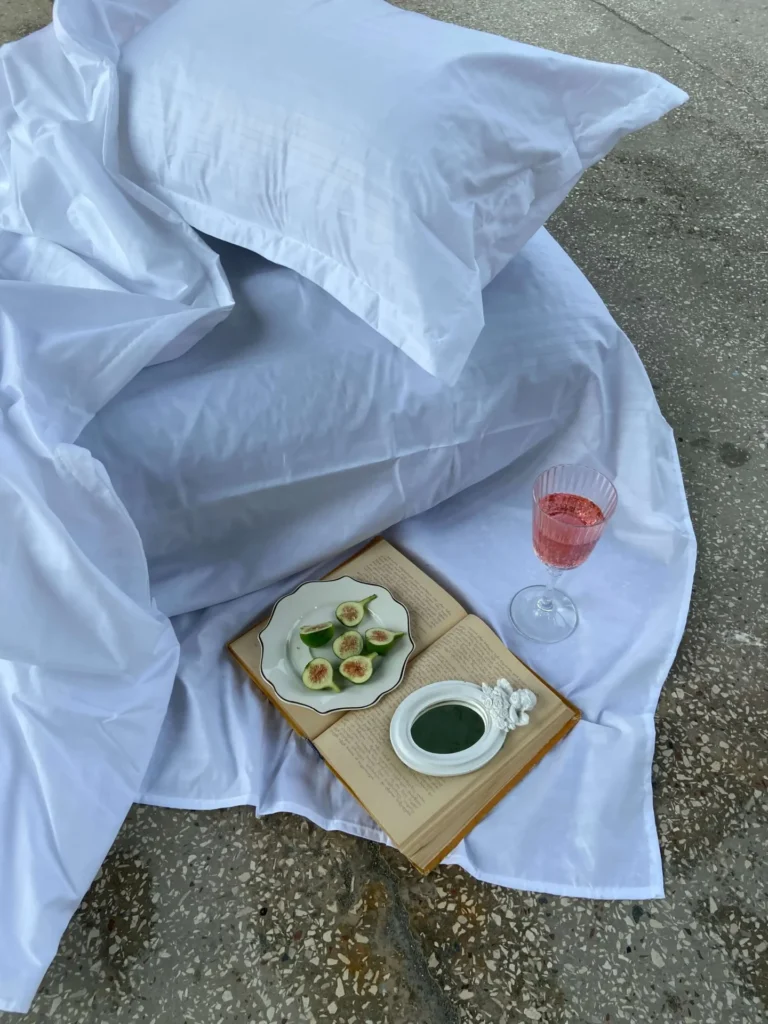
10) Keep tent warm
The weather when camping isn’t sure to be chilly, but it’s still important to pack accordingly, and you should also assume that the temperature might drop. These camping ideas will make you warmer and more comfortable if you’re cold.
- Drink some hot water or tea, or take a warm meal before bed. You’ll sleep with a stable core temperature.
- Wearing dry clothing to bed is a good idea. This will help you keep your head close by filling your backpack.
- To help you sleep, try using a warm water bottle. The warm water bottle is most soothing near the body’s center.
- You’ll feel warmer after a meal since your body produces heat while it digests your food.
- To prevent chilly gusts, seal tent holes and vents. Use a vestibule tent, a draft blocker, or extra clothes to seal the tent entrance and window gaps.
Conclusion
If you are wondering how to make sleeping in a tent more comfortable, these proven techniques can help you make sleeping in your tent more comfortable. You won’t have to move around or worry about waking up with a sore back because of a mattress with too much give. Camping may be relaxing if you choose the right gear, organize and insulate well, and create a peaceful sleep environment.

